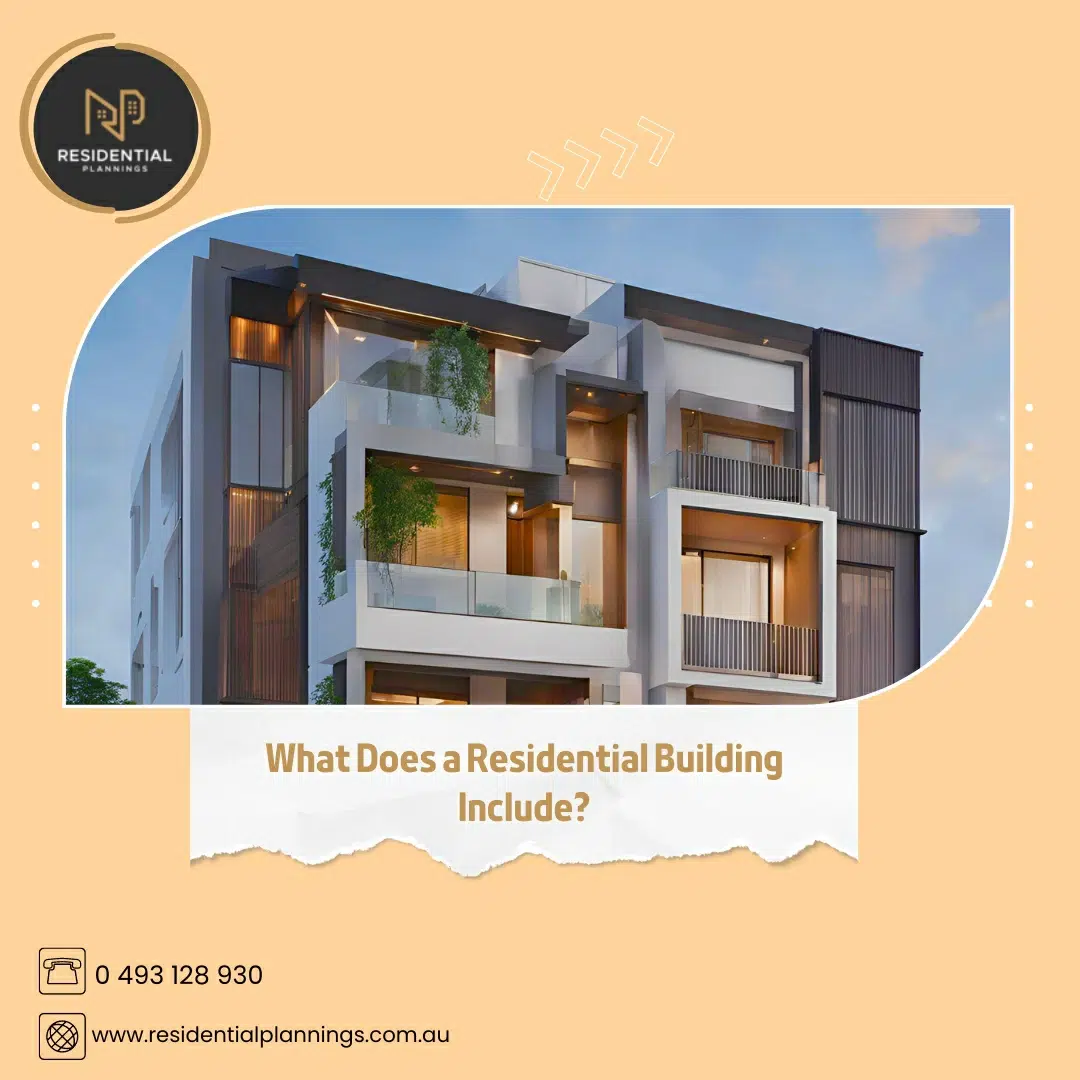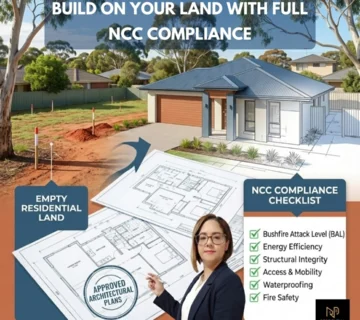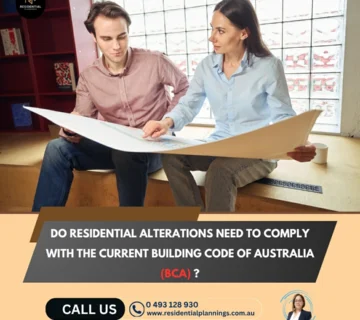A residential building is more than just a structure; it is a thoughtfully designed environment that provides comfort, safety, and functionality to its occupants. This article explores the various components that make up a residential building, from its foundational elements to modern amenities. By the end, you’ll have a thorough understanding of what constitutes a residential building and the importance of each element in creating a comfortable living space.
Table of Contents
- Introduction to Residential Buildings
- Key Components of a Residential Building
- Foundation and Structural Elements of a Residential Building
- Exterior Features of a Residential Building
- Interior Spaces in a Residential Building
- Essential Systems in a Residential Building
- Plumbing Systems in a Residential Building
- Electrical Systems in a Residential Building
- HVAC Systems in a Residential Building
- Design and Aesthetics in Residential Buildings
- Architectural Styles in Residential Buildings
- Interior Design in Residential Buildings
- Sustainability in Residential Buildings
- Eco-Friendly Materials in Residential Buildings
- Energy Efficiency in Residential Buildings
- Safety and Security in Residential Buildings
- Building Codes and Regulations for Residential Buildings
- Security Features in Residential Buildings
- Technology in Modern Residential Buildings
- Smart Home Systems in Residential Buildings
- Home Automation in Residential Buildings
- Landscaping and Outdoor Spaces in Residential Buildings
- Conclusion on Residential Buildings
Introduction to Residential Buildings
A residential building serves as a home, a place where people live, grow, and create memories. Whether it’s a small apartment or a large family house, each residential building is designed to cater to the specific needs of its occupants. The primary purpose of a residential building is to provide a safe, comfortable, and functional living environment. Understanding what a residential building includes is essential for anyone looking to build, buy, or renovate a home.
Key Components of a Residential Building
Foundation and Structural Elements of a Residential Building
The foundation and structural elements are the backbone of a residential building, ensuring its stability and durability.
Foundation of a Residential Building
The foundation supports the entire structure of a residential building and distributes its weight evenly to prevent settling and cracking. Various types of foundations are used in residential construction, including:
- Slab Foundation: A single, thick concrete slab poured directly on the ground.
- Crawl Space Foundation: Raised foundation allowing access to utilities and insulation.
- Basement Foundation: Provides additional living or storage space below ground level.
Structural Framework of a Residential Building
The structural framework of a residential building includes load-bearing elements that form the skeleton of the house. This typically consists of:
- Walls: Load-bearing and non-load-bearing walls made from materials like wood, steel, or concrete.
- Floors: Layers of materials that provide support and separation between different levels of the house.
- Roof: Protects the building from weather elements and includes components like trusses, rafters, and sheathing.
Exterior Features of a Residential Building
The exterior features of a residential building contribute to its aesthetic appeal and functionality.
Roofing in a Residential Building
The roof is a crucial feature that protects the interior of a residential building from weather conditions. Common roofing materials include:
- Asphalt Shingles: Durable and cost-effective.
- Metal Roofing: Long-lasting and resistant to extreme weather.
- Tile Roofing: Aesthetic appeal and excellent durability.
Siding of a Residential Building
Siding materials protect the exterior walls of a residential building and contribute to its overall look. Popular siding materials include:
- Vinyl Siding: Low maintenance and versatile.
- Wood Siding: Natural appearance but requires regular maintenance.
- Brick or Stone Veneer: Durable and aesthetic, often used for a classic look.
Windows and Doors in a Residential Building
Windows and doors are essential for ventilation, natural light, and security in a residential building. They come in various styles and materials to match the architectural design of the house.
Interior Spaces in a Residential Building
The interior spaces of a residential building are designed for comfort, functionality, and personalisation.
Living Areas in a Residential Building
Living areas include spaces where occupants spend most of their time in a residential building. These include:
- Living Room: A central space for relaxation and socialising.
- Dining Room: An area for meals, often adjacent to the kitchen.
- Bedrooms: Private spaces for rest and sleep.
Kitchen in a Residential Building
The kitchen is a vital part of a residential building, serving as a place for cooking, dining, and socialising. Modern kitchens often feature:
- Cabinets and Countertops: Provide storage and workspace.
- Appliances: Include ovens, refrigerators, dishwashers, and microwaves.
- Islands and Breakfast Bars: Offer additional seating and preparation space.
Bathrooms in a Residential Building
Bathrooms are designed for hygiene and comfort. They typically include:
- Fixtures: Toilets, sinks, and showers or bathtubs.
- Storage: Cabinets and shelves for toiletries and towels.
- Ventilation: Essential for preventing moisture buildup and maintaining air quality.
Essential Systems in a Residential Building
Plumbing Systems in a Residential Building
The plumbing system in a residential building is responsible for delivering fresh water and removing waste. Key components include:
- Water Supply Lines: Pipes that bring clean water into the house.
- Drainage Systems: Remove wastewater from sinks, toilets, and showers.
- Hot Water Systems: Include water heaters and boilers to provide hot water.
Electrical Systems in a Residential Building
Electrical systems power all electrical devices and lighting in a residential building. Key elements include:
- Wiring: Conducts electricity throughout the house.
- Circuit Breakers: Protect the electrical system from overloads.
- Outlets and Switches: Provide access to electrical power and control lighting.
HVAC Systems in a Residential Building
Heating, Ventilation, and Air Conditioning (HVAC) systems maintain comfortable indoor temperatures and air quality in a residential building. Components include:
- Furnaces and Boilers: Provide heat during colder months.
- Air Conditioners: Cool the indoor air during hot weather.
- Ventilation Ducts: Distribute air throughout the house.
Design and Aesthetics in Residential Buildings
Architectural Styles in Residential Buildings
The architectural style greatly influences the appearance and functionality of a residential building. Popular styles include:
- Modern: Characterised by clean lines, open spaces, and minimalistic designs.
- Traditional: Features classic design elements like gabled roofs and detailed trim.
- Contemporary: Combines modern and traditional elements with innovative design.
Interior Design in Residential Buildings
Interior design focuses on creating aesthetically pleasing and functional living spaces within a residential building. Key aspects include:
- Furniture: Selecting pieces that complement the style and function of each room.
- Lighting: Using a mix of natural and artificial light to enhance the ambiance.
- Colour Schemes: Choosing colours that create a desired mood and visual appeal.
Sustainability in Residential Buildings
Eco-Friendly Materials in Residential Buildings
Sustainable residential buildings use eco-friendly materials to reduce environmental impact. These materials include:
- Recycled Steel: Reduces the need for new metal production.
- Bamboo Flooring: Renewable and durable flooring option.
- Low-VOC Paints: Minimise harmful emissions and improve indoor air quality.
Energy Efficiency in Residential Buildings
Energy efficiency is a key aspect of sustainable residential buildings. Strategies include:
- Insulation: Reduces heating and cooling demands.
- Energy-Efficient Windows: Minimise heat loss and gain.
- Solar Panels: Provide renewable energy to power the house.
Safety and Security in Residential Buildings
Building Codes and Regulations for Residential Buildings
Adhering to building codes and regulations ensures the safety and integrity of a residential building. Important considerations include:
- Structural Safety: Ensuring the building can withstand various stresses.
- Fire Safety: Incorporating fire-resistant materials and smoke detectors.
- Accessibility: Designing for ease of use by people with disabilities.
Security Features in Residential Buildings
Modern residential buildings often include advanced security features to protect occupants and property. These features can include:
- Alarm Systems: Monitor for break-ins and alert authorities.
- Surveillance Cameras: Provide real-time video of the property.
- Smart Locks: Offer keyless entry and remote control.
Technology in Modern Residential Buildings
Smart Home Systems in Residential Buildings
Smart home systems integrate technology into the everyday functions of a residential building. These systems can control:
- Lighting: Adjust brightness and colour temperature remotely.
- Thermostats: Optimise heating and cooling for comfort and efficiency.
- Appliances: Operate kitchen and laundry appliances via smartphone apps.
Home Automation in Residential Buildings
Home automation in a residential building enhances convenience and efficiency. Features can include:
- Voice Assistants: Control various devices using voice commands.
- Automated Blinds and Curtains: Adjust window coverings based on time of day or sunlight.
- Security Systems: Automatically lock doors and activate alarms when leaving the house.
Landscaping and Outdoor Spaces in Residential Buildings
Landscaping and outdoor spaces are essential elements of a residential building. They provide aesthetic appeal and recreational areas for occupants.
Gardens and Lawns in Residential Buildings
Gardens and lawns enhance the beauty of a residential building and offer space for outdoor activities. Key features include:
- Plant Selection: Choosing plants that thrive in the local climate.
- Irrigation Systems: Efficient watering systems to maintain greenery.
- Outdoor Lighting: Illuminates pathways and highlights landscaping features.
Patios and Decks in Residential Buildings
Patios and decks extend the living space of a residential building to the outdoors. They can be used for:
- Dining and Entertaining: Providing space for outdoor meals and gatherings.
- Relaxation: Offering areas to sit and enjoy the outdoors.
- Cooking: Including outdoor kitchens or barbecues for culinary activities.
Fences and Gates in Residential Buildings
Fences and gates in a residential building provide privacy and security. Common materials include:
- Wood: Offers a natural look and can be customized in various styles.
- Metal: Provides durability and a modern aesthetic.
- Vinyl: Low-maintenance option available in many designs.
Conclusion on Residential Buildings
Understanding what a residential building includes is crucial for anyone involved in building, buying, or renovating a home. From the foundation and structure to modern technological integrations, each component plays a vital role in creating a safe, comfortable, and functional living environment. By considering all aspects of a residential building, you can ensure that your home meets your needs and provides a high quality of life for its occupants.




